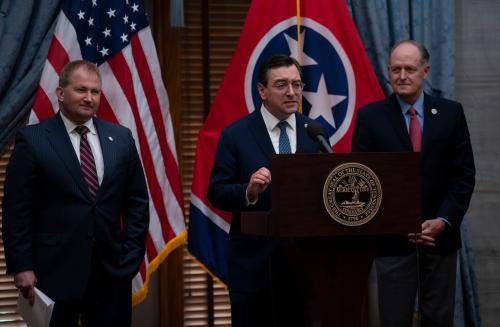Obamacare has once again survived judicial scrutiny. The Supreme Court in King v. Burwell decided by a 6-3 vote that when Congress provided health insurance subsidies to those who purchased their insurance through “an exchange established by a state,” it meant also to subsidize people who secured their insurance coverage through the Federal Exchange, the source of insurance for those living in states that did not establish exchanges. Had the Court decided otherwise, an estimated 6.4 million people living in 34 states would have lost their subsidies. For many the absence of subsidies would have released them from the ACA’s requirement that they purchase insurance because that requirement lapses if insurance costs after subsidies amount to more than 8% of a person’s income. With no insurance requirement and high out of pocket costs, many of those insured through the federal exchange could be expected to forego insurance, particularly people in good health. For health insurers this would mean that their insured base of the mainly healthy would drastically shrink, while their ACA mandated obligations to accept and insure at similar rates all applicants regardless of health problems would remain intact. Thus, to make a profit, health insurers would have to raise their rates for everyone, perhaps by as much as 50 to 70 percent. This in turn would both free more people to forego insurance and incentivize them to do so, leading to further shrinkage of the insured base, again disproportionately concentrated among the more healthy. Insurance rates would again jump. Thus the cycle would continue, but not for long. Obamacare would be caught in a “death spiral,” and the ACA’s repeal would be the only means of escape.
“Congress passed the Affordable Care Act to improve health insurance markets, not to destroy them. If at all possible, we must interpret the Act in a way that is consistent with the former, and avoids the latter. Section 36B can fairly be read consistent with what we see as Congress’s plan, and that is the reading we adopt.” – Chief Justice Roberts, writing for the majority in King v. Burwell.
This death spiral is what the plaintiffs in King wanted and is why they brought their suit. Did Congress, when it passed the ACA, intend to facilitate such an outcome? The six justices in the King majority said, “No,” and no doubt they are correct. The three justices who dissented barely addressed this issue. Whether Congress wanted to facilitate a death spiral or not was not their concern. The ACA, they argued, in one of Justice Scalia’s more colorful opinions, distinguished state exchanges from the federal one, and provided subsidies only for people who acquired insurance through state exchanges. Whatever the consequences and whatever Congress might have thought of them, it was the Court’s job to apply the ACA as it was written. The dissent also argued that the law was intended to be applied as written, even if Congress might have written differently had it realized the implications of what it provided.
Although King has determined, for the moment, the fate of Obamacare, Obamacare is not what the case is about. Rather it is about what makes laws ambiguous and how statutory language should be interpreted. The majority, speaking through Chief Justice Roberts, admitted that the specific language providing subsidies for those purchasing insurance through state exchanges appeared clear, but found ambiguity when this apparently clear language was placed in the statute’s larger context. Not only did Congress at one place arguably equate the federal exchange with state ones, but a number of the law’s provisions make little sense if subsidies are not available to people purchasing insurance on the federal exchange. Thus two sections of the ACA, taken together, provide that tax credits “shall be allowed” for anyone earning between 100% and 400% of the federal poverty line. This entitlement is negated if those who purchase insurance on the federal exchange cannot claim the promised subsidies. For the justices in the majority, inconsistencies like this are enough to create, within the bounds of the statute, ambiguity about whether Congress in fact intended to confine subsidies to purchases made through state exchanges. Faced with contextual ambiguity, the majority adopted the long-dominant view of statutory interpretation: except in certain circumstances involving criminal laws, if the Court can discern the clear intent of Congress, it should interpret statutes so as to effectuate that intent. In doing so, the Court got the ACA right. No one could reasonably suppose that the Democrats who passed the ACA over intransigent Republican opposition meant to have the statute’s viability held hostage to decisions by governors and legislators in Republican-dominated states.
“We should start calling this law SCOTUScare…. The somersaults of statutory interpretation [the majority] have performed…will be cited by litigants endlessly, to the confusion of honest jurisprudence. And the cases will publish forever the discouraging truth that the Supreme Court of the United States favors some laws over others, and is prepared to do whatever it takes to uphold and assist its favorites.” – Justice Scalia, writing for the dissent in King v. Burwell.
The three dissenters, in an opinion by Justice Scalia, took a different view. They denied that the law was ambiguous. Although Scalia was willing to acknowledge that context could affect how legal language is interpreted, his bottom line is a strong presumption that congressional intent is best discerned from the literal meaning of the language lawmakers use. Although Scalia attempted to dispose of the contextual inconsistencies that Roberts highlighted, the most he did (and felt he had to do) was to suggest competing interpretations that minimized problems. For Scalia so long as one could imagine a reason why Congress might have created apparent inconsistencies, no ambiguity remained. He correctly claimed that read literally, the ACA limited subsidies to insurance bought through state-established exchanges. Those who purchased insurance through the federal exchange were from the dissent’s perspective out of luck.
One might ask whether King turned on anything more than the political preferences of the justices dressed up as a dispute about interpretation. Scalia thought his failure to persuade was so explained: “[N]ormal rules of interpretation seem always to yield to the overriding principle of the present Court: The Affordable Care Act must be saved.” No doubt others would be more than willing to attribute the dissenters’ votes to the same outcome-oriented motives. The three who dissented form the Court’s conservative extreme. It would be surprising if, as private citizens, they were not vehemently opposed to the ACA. Yet this view, like Scalia’s view of the majority, may well be too cynical. Justice Kennedy, who voted with the majority in King, just three years ago co-wrote a dissent arguing that the ACA’s individual mandate was unconstitutional. Had the dissenters prevailed, the ACA would have died then and there. Moreover, the justices’ different perspectives on how to interpret legal language are long standing. In interpreting both the Constitution and statutes, the justices who formed the majority are predisposed to look at the scheme that a law is designed to effect and to determine the meaning of a law’s language in light of that scheme. The dissenters, particularly Scalia and Thomas, acknowledge that historical or other study may help determine meaning, but they believe that legal language is seldom opaque and that it should be interpreted literally or, if dated, by closest modern analogy.
About ten months ago I posted a comment in which I suggested that Bond v. United States, a bizarre prosecution of a woman who had placed a chemical irritant on the door knob of her husband’s lover, might hold a clue to the Court’s decision in King. An issue in Bond was whether a federal chemical weapons statute, which literally read criminalized the woman’s behavior, was meant to apply to crimes of that sort. Looking at the intent behind the law, the Court’s majority, including Roberts and Kennedy held it did not. Taking the law’s language literally, Scalia, Thomas and Alito, the dissenters in King, held that it did. Bond and King are thus consistent. Read together, they make more credible the claim that King turned on different theories of statutory interpretation rather than on the justices’ political preferences.
This does not mean that politics had nothing to do with King. Some in the majority may well have been influenced by the disruption that would have occurred had the case been decided differently. Moreover, but for politics the King case might never have arisen. As Chief Justice Roberts takes pains to point out, political exigencies meant that the ACA was drafted and enacted in ways that circumvented the normal legislative process. Sloppy drafting was a predictable result. Moreover, the drafting flaws which seem obvious today were not immediately noticed. They might be unnoticed still but for the efforts of lawyers searching the legislative language for ways to undermine the statute. Also, when a statute contains unintended ambiguities or similar errors, corrective language is routinely passed, but with the ACA this was not going to happen. Politics, in short, is all over this case, whether or not it motivated judicial votes.
One might hope that King v. Burwell marks the end of efforts to have judges do what the Republican Congress to date cannot—overturn Obamacare. Yet, already in the pipeline is a case arguing that since in its first encounter with Obamacare, the Supreme Court held that the taxing power but not the commerce clause authorized the enactment of the ACA, the law was not constitutionally enacted because the Constitution requires that all bills for raising revenue originate in the House and not the Senate. Stay tuned.
The Brookings Institution is committed to quality, independence, and impact.
We are supported by a diverse array of funders. In line with our values and policies, each Brookings publication represents the sole views of its author(s).




Commentary
King v. Burwell: Roberts Court is clear on Obamacare ambiguity
June 26, 2015